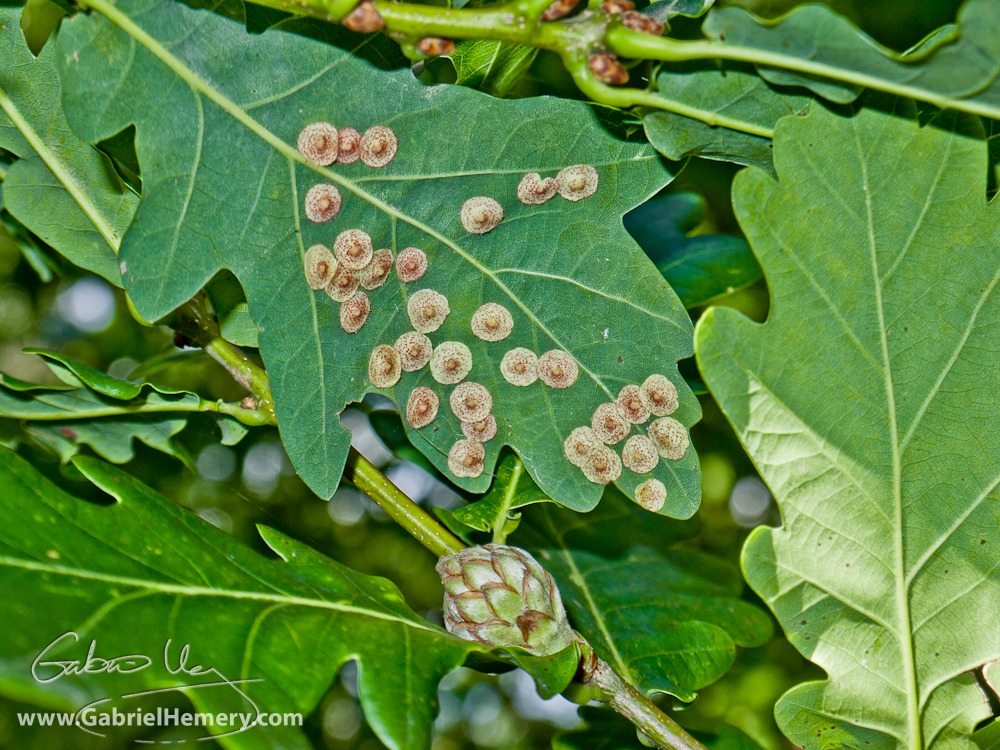Cecidology – the study of galls produced on trees and plants by fungi, insects, or mites
Most children have played games with oak apples (e.g. they’re great in a slingshot!) but few kids, or adults, realise that an oak apple is not a natural part of the tree, at least not in a botanical sense. Oak apples are one example of a Gall and there are many hundreds of other types of galls found on trees. Galls are actually made by insects, or sometimes caused by fungi. Look carefully at an old oak apple and you will see a tiny hole where the wasp (e.g. Biorhiza pallida) exited the gall when ready to leave. Cut open a fresh oak apple and you will find the white larva or grub of the wasp nestling inside.
Certain insects that feed on trees can create their own mini-habitats on a plant to protect them during part of their reproductive cycle: we call these a gall. They manipulate the plant tissue to provide protection from predators and food. This year I’ve been on some cecidological forays through woodland near my home and found some interesting examples of galls.
Lime nail galls (Eriophyes tiliae) can be seen on lime trees in early summer and are appropriately named. They look like bright red nails that have been driven through the leaf from underneath.

Perhaps my favourite gall is the Robin’s pincushion; a gall that forms on the dog rose. It is often seen in hedgerow or woodland edge. Its tangled mass of green and red growths can appear on stems and leaves.

There are many galls, other than the oak apple, that appear on various oak species. Some common oak gall species on pedunculate oak in Europe are the Artichoke gall and Spangle gall.

I am certainly not a gall specialist or cecidologist but I find them fascinating. If you want to find out more I recommend a visit to the website of the British Plant Gall Society.
Gabriel Hemery
 This work is licensed under a Creative Commons Attribution- NonCommercial- NoDerivs 3.0 United States License.
This work is licensed under a Creative Commons Attribution- NonCommercial- NoDerivs 3.0 United States License.
